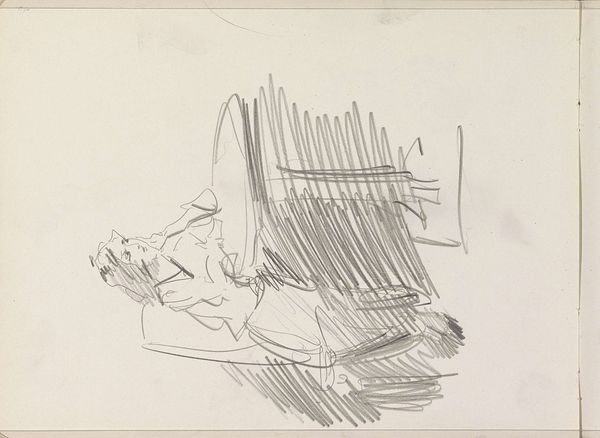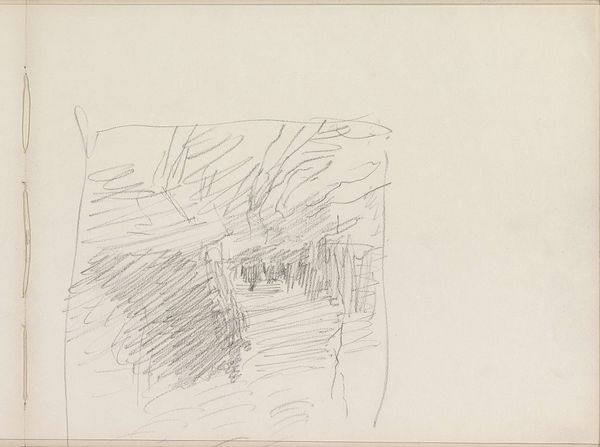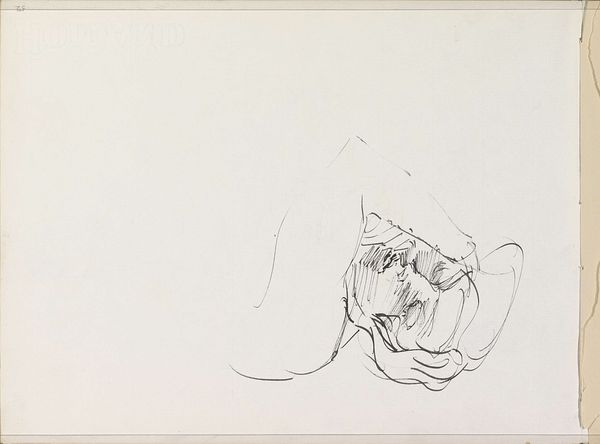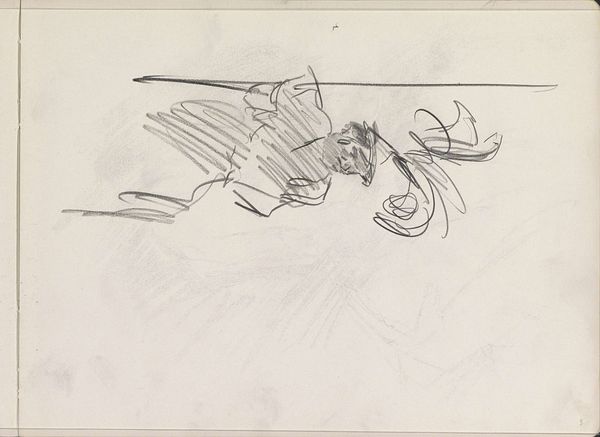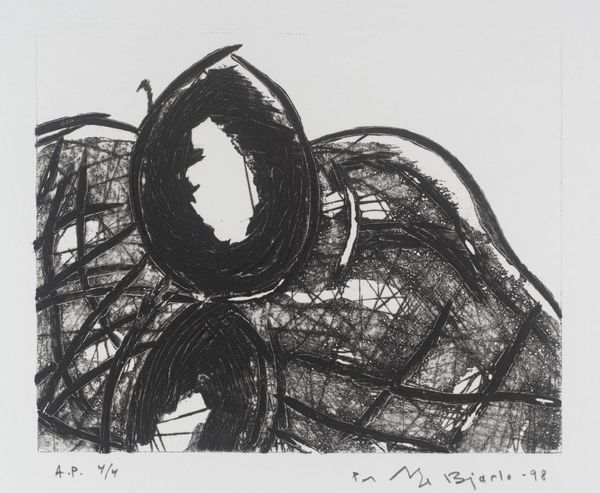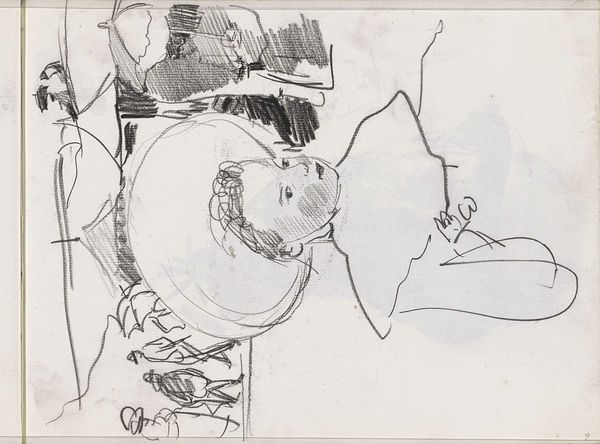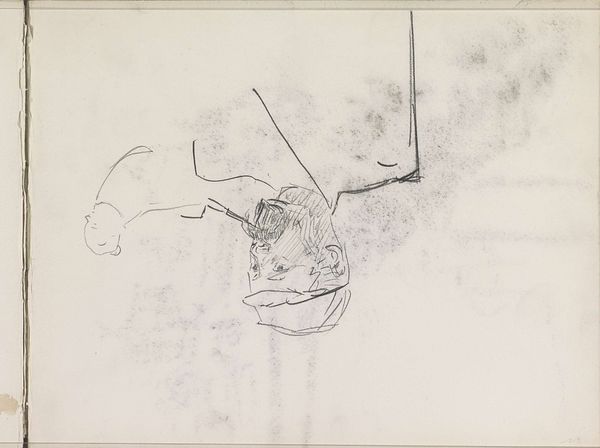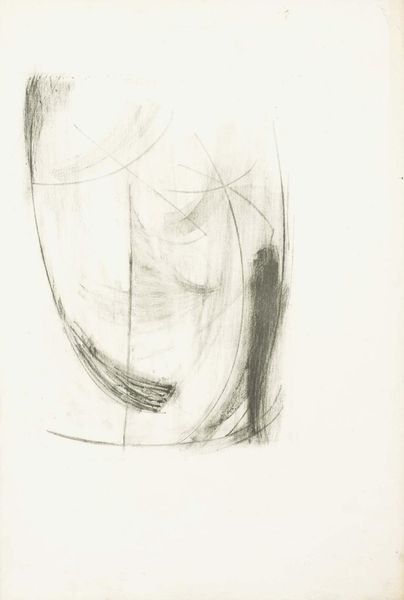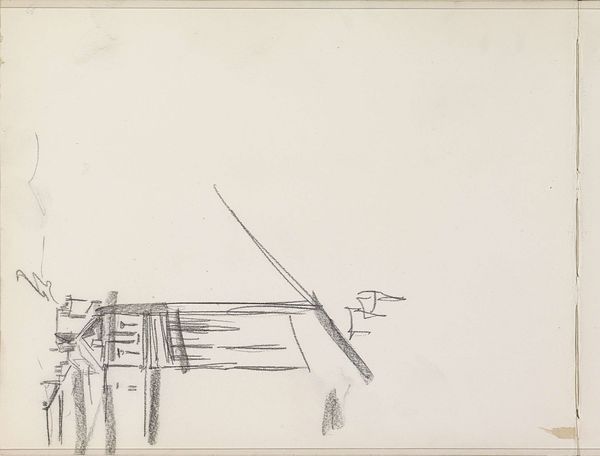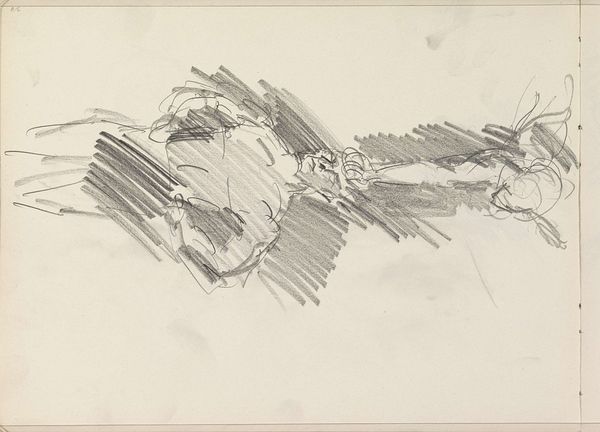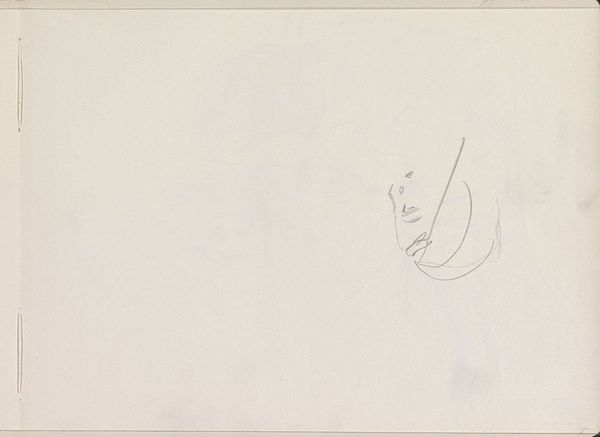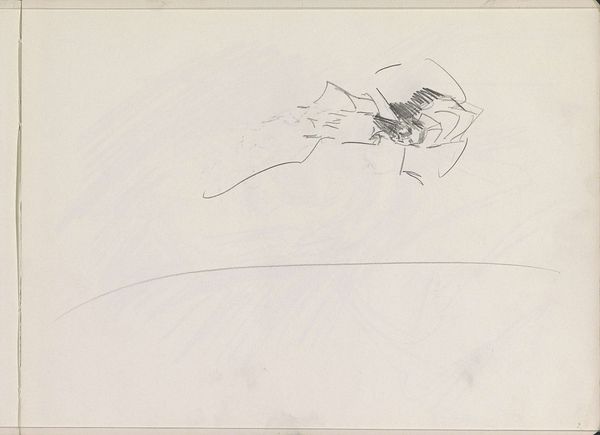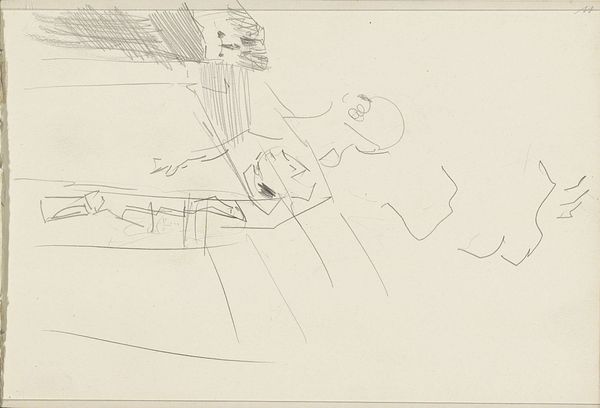
Copyright: Rijks Museum: Open Domain
Curator: Welcome. Here we have a piece titled "Mannenhoofd met hoed," or "Head of a Man with a Hat," by Isaac Israels, created sometime between 1875 and 1934. It's a pencil drawing, currently held in the collection of the Rijksmuseum. Editor: My first impression is its quickness. You can almost see the artist capturing a fleeting moment, a mere suggestion of form rather than a detailed likeness. There's a sense of spontaneity, of immediate translation from eye to paper. Curator: Indeed. Israels was known for his impressionistic style, and this drawing really highlights that. He was part of a generation exploring modern life, depicting everyday scenes and people with a focus on capturing light and movement. Editor: What I find particularly compelling is the almost abstract quality of the hat. The material, its construction, and purpose—they're all reduced to a few deft strokes. You see the tool working, the pencil smudging and building tone. It reveals so much about the *process* of image-making. Curator: Exactly. This sketch isn't a polished portrait commissioned by a wealthy patron, it’s likely from a personal sketchbook—a preliminary study, perhaps for a larger work. It offers a glimpse into Israels' artistic process. It begs questions of how artists use sketching in their broader practice, too, and whether preparatory material, such as this, can even be considered 'finished' art. Editor: And consider the socio-economic implications! Sketches like these—dependent on the availability of inexpensive paper and pencils—represent a democratized access to image creation. The materials shaped not just the aesthetic, but also who could participate in art-making. Were Israels to commission it to other drawers from that era it would have meant a regular income for them... Curator: That’s a good point. While Israels was already established, his engagement with modern themes extended to representing different social classes and urban life. This sketch, while seemingly simple, connects to broader social trends in late 19th and early 20th century art. It’s a peek into a modernising society where the very fabric of daily life becomes subject for artistic study. Editor: I'll be thinking about the material conditions that allowed for this kind of quick, expressive art. Thanks for shining light on the drawing and the bigger cultural impact! Curator: And I’ll be pondering the nature of the art historical canon and what defines a significant image from a fleeting impression. Thanks to that the visitor has an immediate experience!
Comments
No comments
Be the first to comment and join the conversation on the ultimate creative platform.
